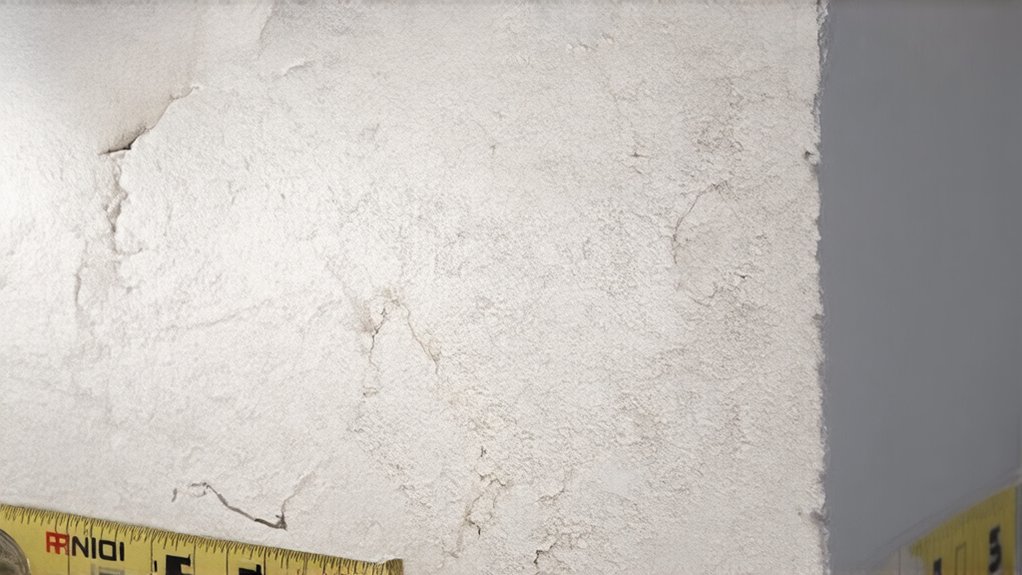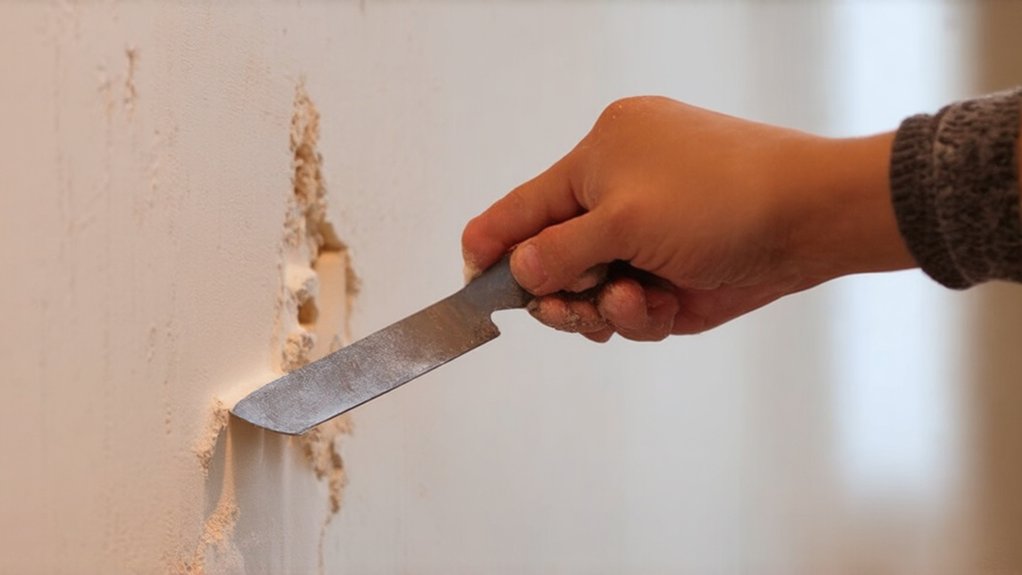When you spot drywall damage, assess its severity carefully. Small holes and minor cracks can typically be patched yourself, while large holes, extensive water damage, or structural cracks demand professional intervention. Look for signs like discoloration, soft spots, or widespread mold growth. Your wall's stability and appearance are at stake, so don't ignore potential issues. Keep exploring to reveal more information that'll help you make the smartest repair decision.
Types of Drywall Damage and Their Severity
Drywall damage can range from minor cosmetic imperfections to major structural concerns that demand immediate attention. You'll want to carefully assess the type and extent of damage before deciding on a repair strategy. Professional drywall contractors in Erie, PA recommend thoroughly inspecting damage before making repair decisions.
Water damage indicators like discoloration, soft spots, or visible mold suggest potential structural integrity issues that might require more extensive intervention. Small holes, hairline cracks, and surface scratches are typically easy to patch, while large holes, significant water damage, or widespread cracking could signal deeper problems.
Understanding the severity helps you determine whether a simple repair or complete replacement is necessary.
Assessing Small Repairs You Can Handle Yourself
While small drywall repairs might seem challenging at first, most homeowners can successfully tackle minor damage with the right tools and techniques. Spotting water damage early and checking for cracks can help you determine whether you'll need professional help or can manage the repair yourself. Residential drywall contractors in Erie, Pennsylvania recommend carefully evaluating the extent of damage before attempting repairs. Small holes, minor surface cracks, and slight wall blemishes are typically DIY-friendly projects. You'll want to assess the damage carefully, measuring the size and depth of the imperfection. Consider your skill level and available time before starting. With patience and the right supplies, you can restore your wall's smooth appearance and prevent further deterioration.
When Professional Repair Becomes Necessary
How do you know when it's time to call in a professional for drywall repair? A qualitative assessment reveals certain warning signs that DIY solutions won't suffice. Extensive water damage, large holes larger than 6 inches, or structural cracks indicate you'll need expert help.
Professional inspection can uncover hidden issues like mold, electrical problems, or underlying structural damage that aren't visible to untrained eyes. If you're dealing with multiple repair areas, complex damage, or situations requiring precise matching of texture and paint, a skilled contractor becomes essential. Your home's integrity matters, so don't hesitate to seek professional knowledge when repairs exceed your comfort zone.
Signs That Complete Drywall Replacement Is Required
When significant damage compromises your wall's structural integrity, complete drywall replacement might be your most strategic solution. Major structural cracks that span multiple wall sections or appear jagged and deep indicate serious underlying problems.
If you're dealing with excessive moisture damage that's caused widespread mold growth or significant material deterioration, replacing the entire drywall section becomes essential. Water stains, warping, or soft spots suggest irreparable damage that simple patching can't fix. These warning signs mean your wall's stability is at risk, and professional replacement will restore your home's safety and appearance.
Cost Comparison: Repair vs. Replacement
Understanding the financial implications of drywall damage helps homeowners make informed decisions about repair strategies. Minor repairs typically cost between $50 and $300, while complete replacement can range from $500 to $1,500, depending on the damage's extent.
Budget considerations should include material costs, labor expenses, and potential timeline implications. You'll want to assess whether patching small holes or replacing entire sections makes more economic sense. Professional evaluation can provide precise cost estimates and help you determine the most cost-effective approach for your specific drywall damage, ensuring you make a smart, financially prudent choice.
Preventative Measures to Protect Your Drywall
Proactively safeguarding your drywall can save you significant time, money, and frustration in the long run. Protecting your home's walls requires strategic planning and consistent maintenance.
Key preventative strategies include:
- Monitor humidity control to prevent moisture damage
- Install protective wall coverings in high-traffic areas
- Reinforce structural protection near potential impact zones
- Regularly inspect walls for early signs of wear
Frequently Asked Questions
How Long Does Drywall Repair Typically Take for Small Damages?
You'll find small drywall repairs are quick and hassle-free. With minimal preparation time and an efficient repair process, you can patch most minor damages within 1-3 hours, letting you restore your space seamlessly.
Can I Paint Over Repaired Drywall Immediately After Fixing It?
You'll want to wait until joint compound is completely dry and sanded smooth. Use appropriate drywall finishing techniques and paint compatibility options, ensuring a seamless look that'll make your repair blend perfectly with surrounding walls.
Will My Homeowner's Insurance Cover Drywall Damage and Replacement?
You'll need to review your policy carefully, as insurance claim processes vary. Coverage limitations often depend on the cause of damage—water, mold, or structural issues. Don't assume you're fully covered; consult your agent for specific details about your drywall damage.
What Tools Do I Need for Basic Drywall Repair at Home?
You'll need drywall patch kits, a utility knife, sandpaper, and a putty knife for joint compound application. Grab some measuring tape, drop cloths, and safety gear to make your repair project smooth and professional.
How Do Different Types of Moisture Affect Drywall Repair Decisions?
If you're dealing with water stains or mold growth, you'll want to assess the extent of moisture damage. Extensive moisture can compromise drywall integrity, so you'll need to carefully evaluate whether repair or full replacement is your best solution.



